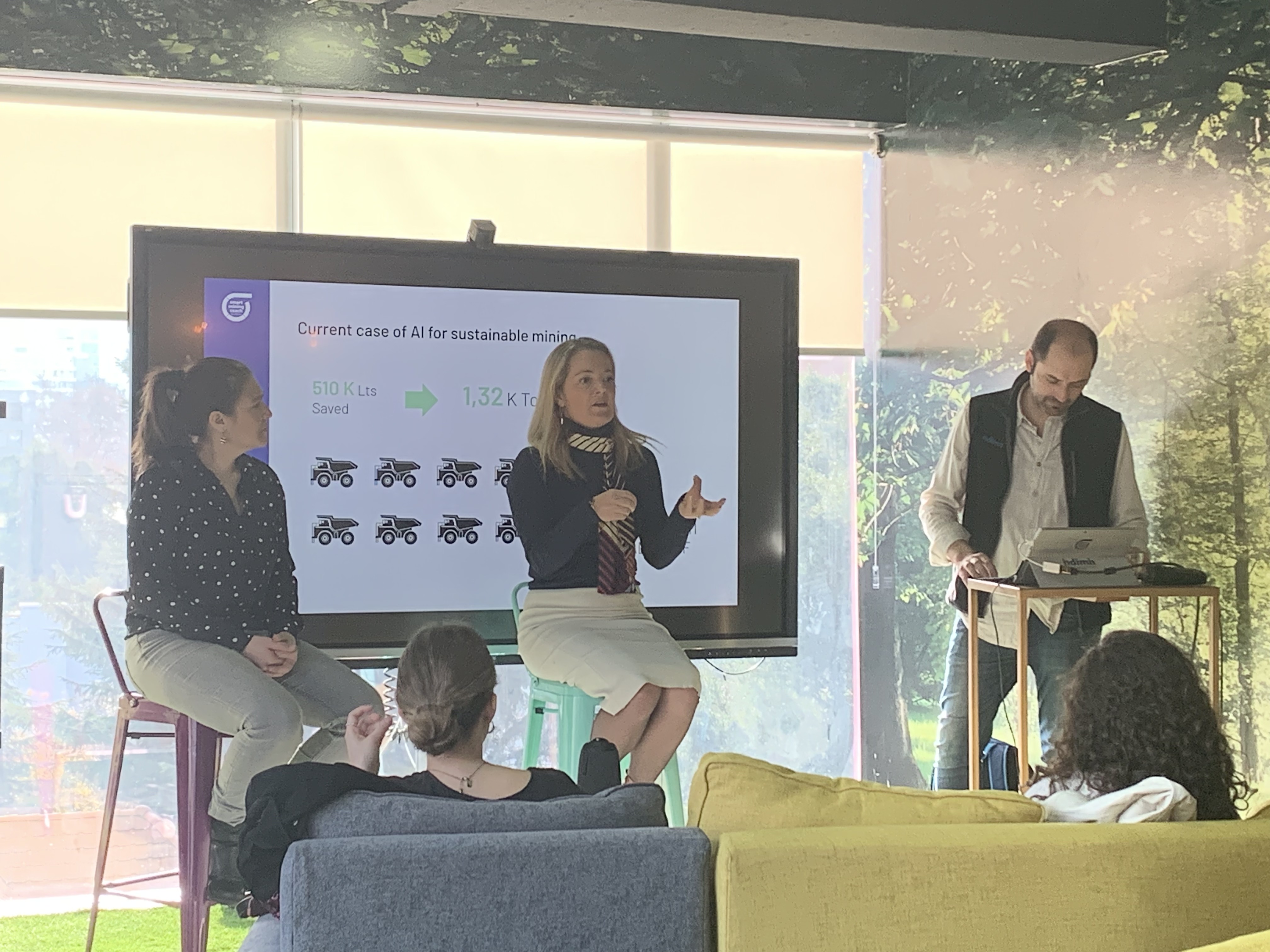InDiMin and PETRA launch AI for Sustainable Mining
Last month, in Santiago, Chilean operator productivity start-up InDiMin and Australian machine learning and optimisation solution provider, PETRA , launched an initiative to explore how AI can help make mining more sustainable.
The #AI4SustainableMining launch was attended by mining companies, universities, Chilean start-ups and PETRA CEO, Dr Penny Stewart.
InDiMin co-founders, Alvado Diaz and Loreto Acevedo, commenced proceedings by providing statistics around energy consumption in mining. They presented a haul truck fuel-efficiency case study to illustrate how machine learning can be used to improve energy efficiency in mines, as well as other potential AI applications for greater energy efficiency.

Immediately following the case studies, the panel quickly cut to a vibrant discussion on the best ways to engage industry in using AI to improve mine sustainability.
As part of the discussion, Dr Stewart highlighted that mining companies do change and adopt new technologies where there is a strong business case. Through audience participation, the idea of using business cases to create change evolved into the discussion of ‘impact cases’.
For example, Anglo American plans to only use renewable energy in Chile by 2021, and Oz Minerals has recently initiated a collaboration project that includes renewable energy. Agnew Gold Operations in Western Australia is also constructing a hybrid wind-solar-battery-gas power system; companies such as these are seen to be leading the way.
Both the panel and audience agreed that industry-wide data sharing from early adopter renewable energy implementations would provide a powerful impact case for change. This then led to deciding the first action from the panel discussion: how can AI and data be used to create an impact case for sustainable mining?

Action 1 was a call for industry-wide collaboration to provide data to prove the impact case through ‘triple bottom-line value’ analysis over the complete lifecycle of an asset.
To achieve this objective, Stewart said she would reach out to organisations like the CEEC and GMG to see whether industry-wide data sharing collaboration fits within their strategic objectives.
Renewable energy currently requires a higher upfront capital expenditure than energy generated from fossil fuels. Under standard NPV analyses, renewables are penalised for having a higher upfront capital expenditure. This is because standard NPV analyses rely upon energy price forecasts, even though we know mid to long-term energy price forecasts are highly unreliable (Ziel, F., Steinert, 2018) and there is no reward for de-risking against higher than expected energy prices.
In this example, machine learning and mathematics can be used to develop energy risk models to enable NPV simulations to take into account energy price risk; accepting higher upfront capital expenditure to build renewable energy infrastructure de-risks long-term energy prices and reduces a mine’s carbon footprint.
The panel then discussed sustainable mining as a vision that arguably transcends any one company or region. The panel identified that this is similar to the industry transformation that was required to achieve a ‘safety first’ culture in mining.
Acevedo highlighted that mining is capable of change, as evidenced by the incredible industry-wide safety transformation that has occurred globally over the past 25 years – all panellists agreed that there is much to be learnt from successful safety transformation.
What were the factors that created such a successful outcome? What lessons can be learnt from that success? This led to the establishment of Action 2.
Action 2 acknowledges that sharing learnings was a key enabler of safety transformation in mining. How can this success factor be leveraged for mining sustainability? The CEEC already showcases industry best practices around energy and water efficiency. PETRA and InDiMin will collaborate with organisations interested in sharing these success stories, particularly in relation to case studies that leverage AI.
A number of audience participants questioned whether some mining companies are being sustainable by ‘purpose’, or more through necessity and to protect their image. The panel discussed mindset as a tool to effect change, and also how some mining companies are leaders in sustainability.
This led to two additional actions:
Action 3 involves directly engaging mining companies to identify how AI can make mining more sustainable. InDiMin and PETRA cohost an industry event with other organisations interested in how AI can help make mining more sustainable, such as universities, professional organisations, MetsIgnited and/or the CEEC.
Action 4 relates to industry engagement. Stewart said she is co-hosting a machine-learning workshop with MetsIgnited at IMARC in Melbourne, Australia, on Monday 28th October, and would take this opportunity to create a workshop activity around machine learning for sustainable mining.

PETRA and InDiMin would like to take this opportunity to thank attendees for their enthusiastic participation in the discussions and vibrant feedback.
To follow our actions in this space, please follow PETRA and InDiMin on social media:
InDiMin


